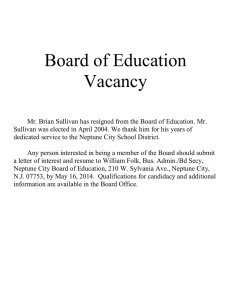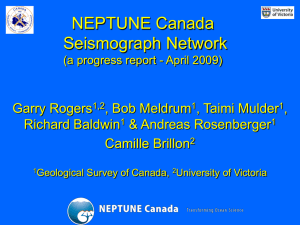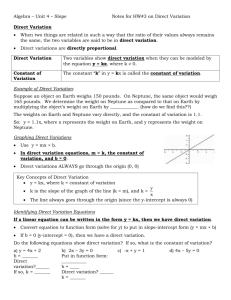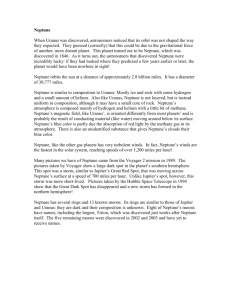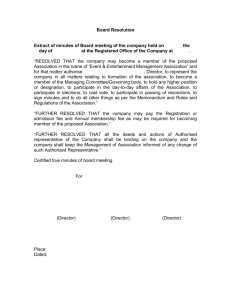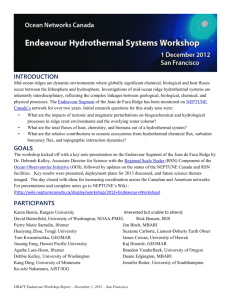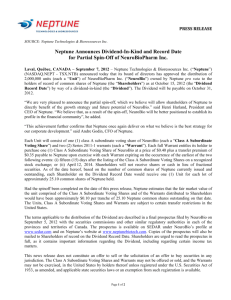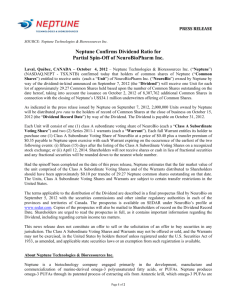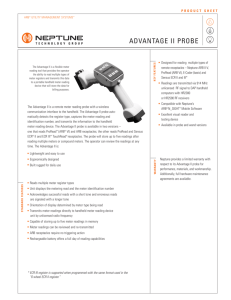Project Manager Responsibility: the success of the NEPTUNE
advertisement
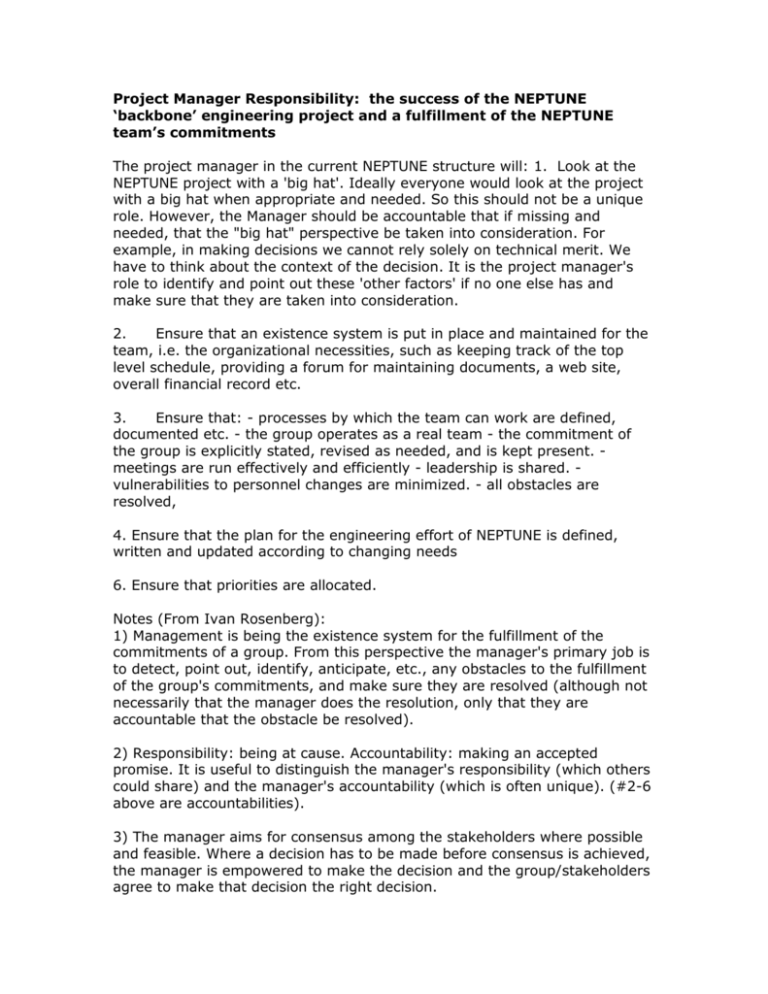
Project Manager Responsibility: the success of the NEPTUNE ‘backbone’ engineering project and a fulfillment of the NEPTUNE team’s commitments The project manager in the current NEPTUNE structure will: 1. Look at the NEPTUNE project with a 'big hat'. Ideally everyone would look at the project with a big hat when appropriate and needed. So this should not be a unique role. However, the Manager should be accountable that if missing and needed, that the "big hat" perspective be taken into consideration. For example, in making decisions we cannot rely solely on technical merit. We have to think about the context of the decision. It is the project manager's role to identify and point out these 'other factors' if no one else has and make sure that they are taken into consideration. 2. Ensure that an existence system is put in place and maintained for the team, i.e. the organizational necessities, such as keeping track of the top level schedule, providing a forum for maintaining documents, a web site, overall financial record etc. 3. Ensure that: - processes by which the team can work are defined, documented etc. - the group operates as a real team - the commitment of the group is explicitly stated, revised as needed, and is kept present. meetings are run effectively and efficiently - leadership is shared. vulnerabilities to personnel changes are minimized. - all obstacles are resolved, 4. Ensure that the plan for the engineering effort of NEPTUNE is defined, written and updated according to changing needs 6. Ensure that priorities are allocated. Notes (From Ivan Rosenberg): 1) Management is being the existence system for the fulfillment of the commitments of a group. From this perspective the manager's primary job is to detect, point out, identify, anticipate, etc., any obstacles to the fulfillment of the group's commitments, and make sure they are resolved (although not necessarily that the manager does the resolution, only that they are accountable that the obstacle be resolved). 2) Responsibility: being at cause. Accountability: making an accepted promise. It is useful to distinguish the manager's responsibility (which others could share) and the manager's accountability (which is often unique). (#2-6 above are accountabilities). 3) The manager aims for consensus among the stakeholders where possible and feasible. Where a decision has to be made before consensus is achieved, the manager is empowered to make the decision and the group/stakeholders agree to make that decision the right decision.
